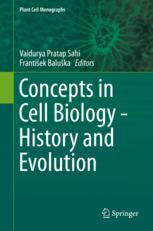

Most ebook files are in PDF format, so you can easily read them using various software such as Foxit Reader or directly on the Google Chrome browser.
Some ebook files are released by publishers in other formats such as .awz, .mobi, .epub, .fb2, etc. You may need to install specific software to read these formats on mobile/PC, such as Calibre.
Please read the tutorial at this link: https://ebookbell.com/faq
We offer FREE conversion to the popular formats you request; however, this may take some time. Therefore, right after payment, please email us, and we will try to provide the service as quickly as possible.
For some exceptional file formats or broken links (if any), please refrain from opening any disputes. Instead, email us first, and we will try to assist within a maximum of 6 hours.
EbookBell Team

5.0
58 reviewsThis book discusses central concepts and theories in cell biology from the ancient past to the 21st century, based on the premise that understanding the works of scientists like Hooke, Hofmeister, Caspary, Strasburger, Sachs, Schleiden, Schwann, Mendel, Nemec, McClintock, etc. in the context of the latest advances in plant cell biology will help provide valuable new insights.
Plants have been an object of study since the roots of the Greek, Chinese and Indian cultures. Since the term “cell” was first coined by Robert Hooke, 350 years ago in Micrographia, the study of plant cell biology has moved ahead at a tremendous pace. The field of cell biology owes its genesis to physics, which through microscopy has been a vital source for piquing scientists’ interest in the biology of the cell. Today, with the technical advances we have made in the field of optics, it is even possible to observe life on a nanoscale. From Hooke’s observations of cells and his inadvertent discovery of the cell wall, we have since moved forward to engineering plants with modified cell walls. Studies on the chloroplast have also gone from Julius von Sachs’ experiments with chloroplast, to using chloroplast engineering to deliver higher crop yields. Similarly, advances in fluorescent microscopy have made it far easier to observe organelles like chloroplast (once studied by Sachs) or actin (observed by Bohumil Nemec). If physics in the form of cell biology has been responsible for one half of this historical development, biochemistry has surely been the other.